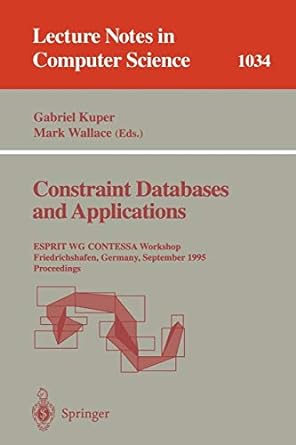Answered step by step
Verified Expert Solution
Question
1 Approved Answer
please anwer all assignment Product Description: - Describe the need for the system. - Briefly describe the system's functions. - Explain how it will work

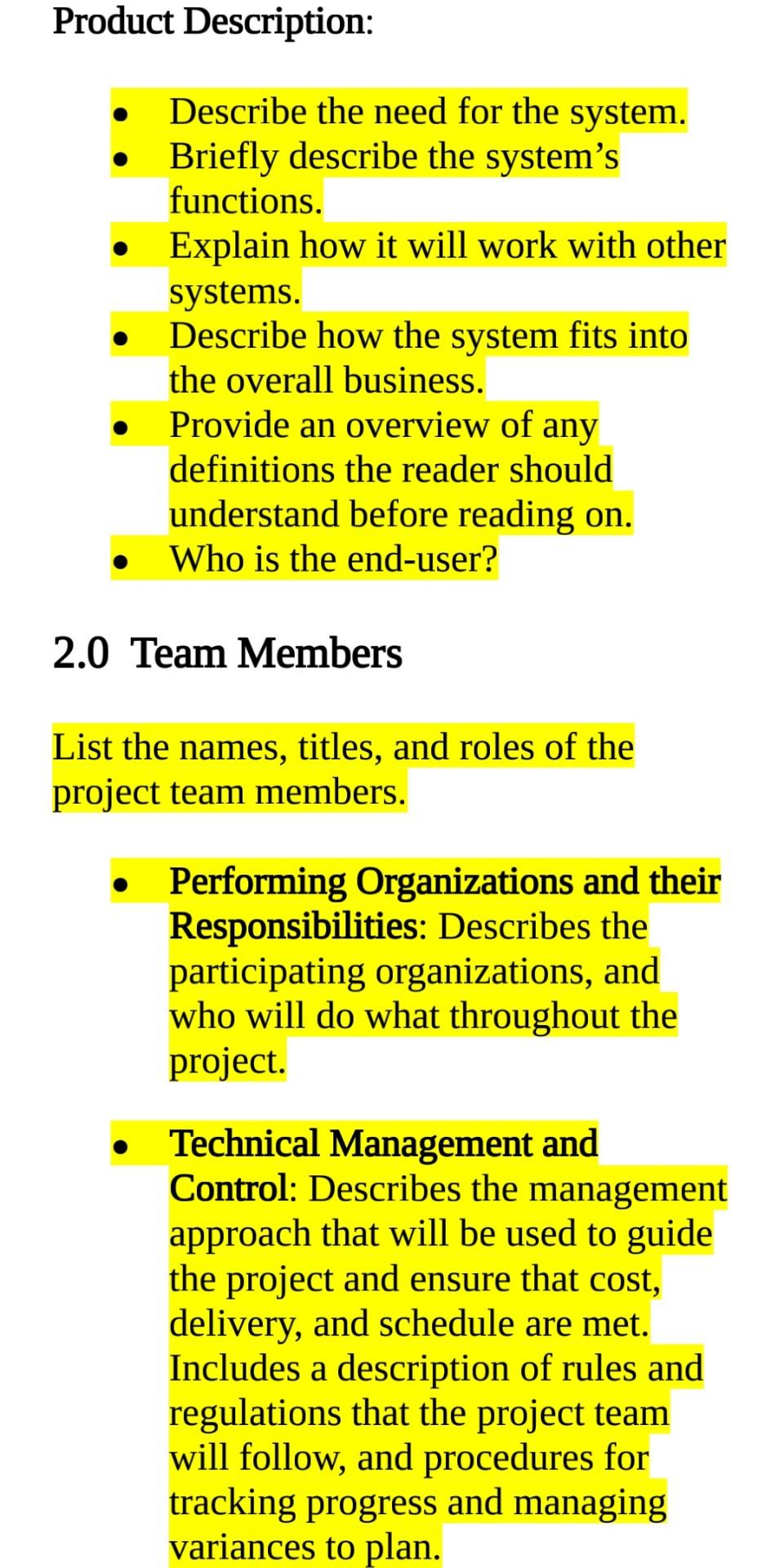
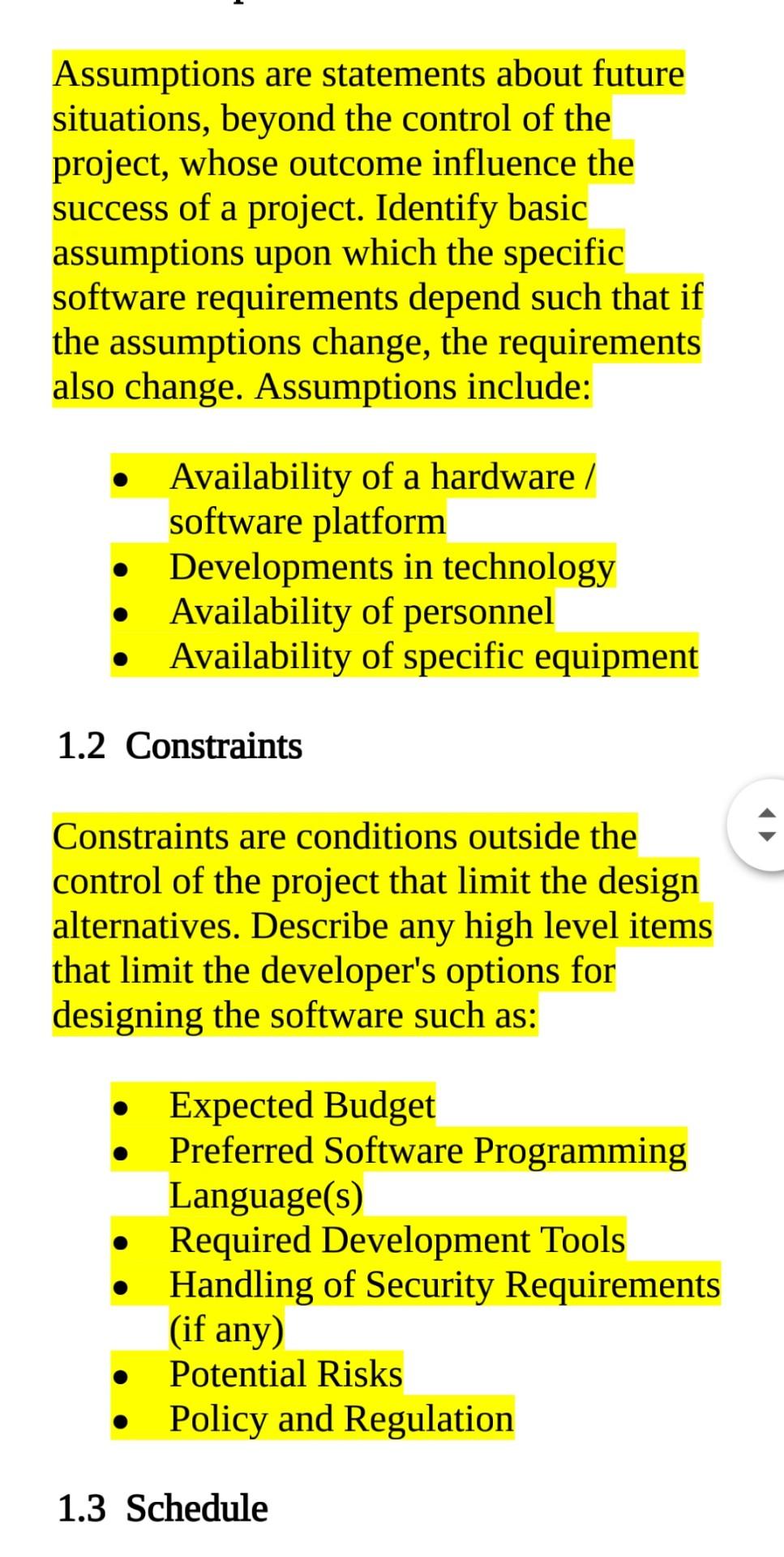
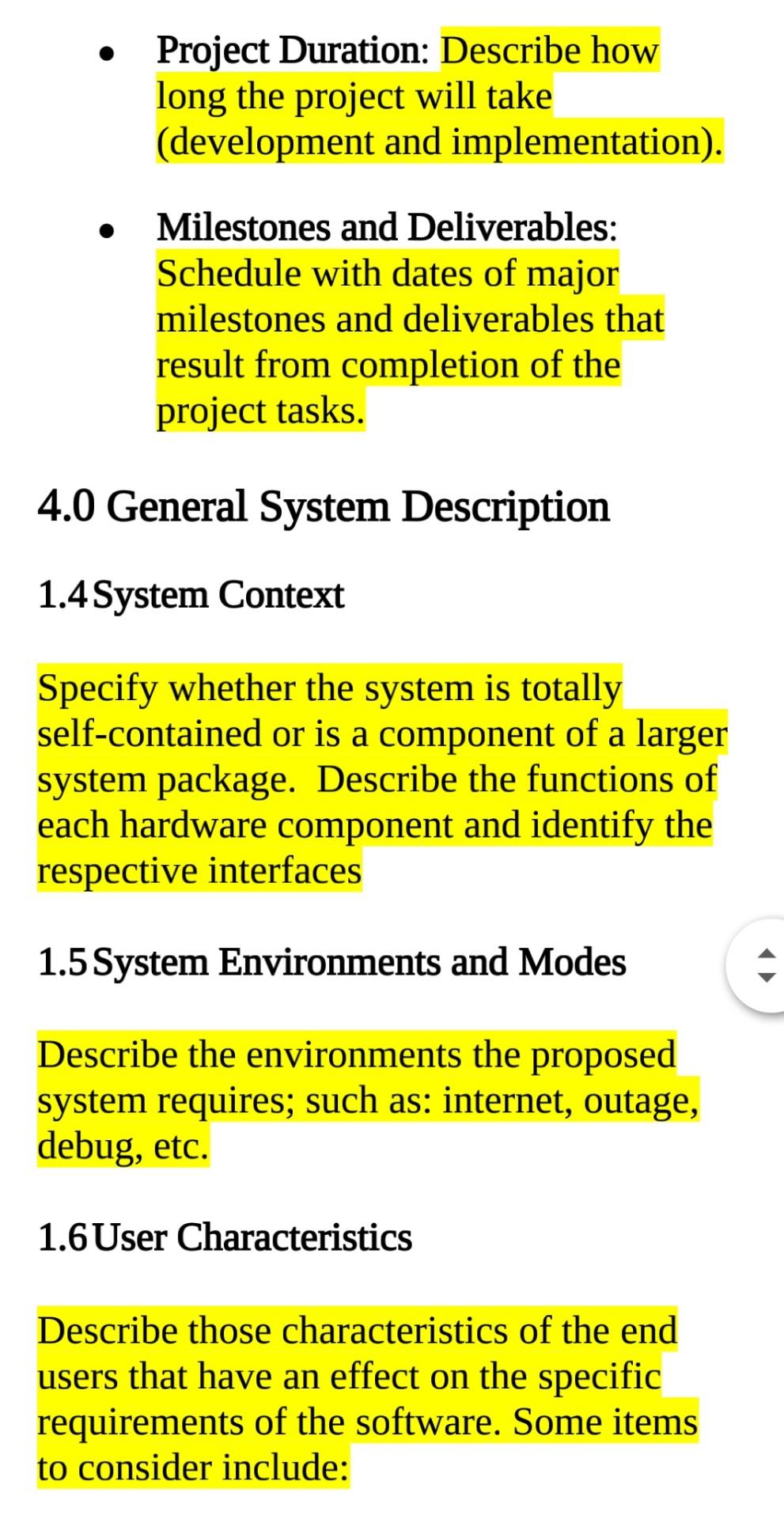
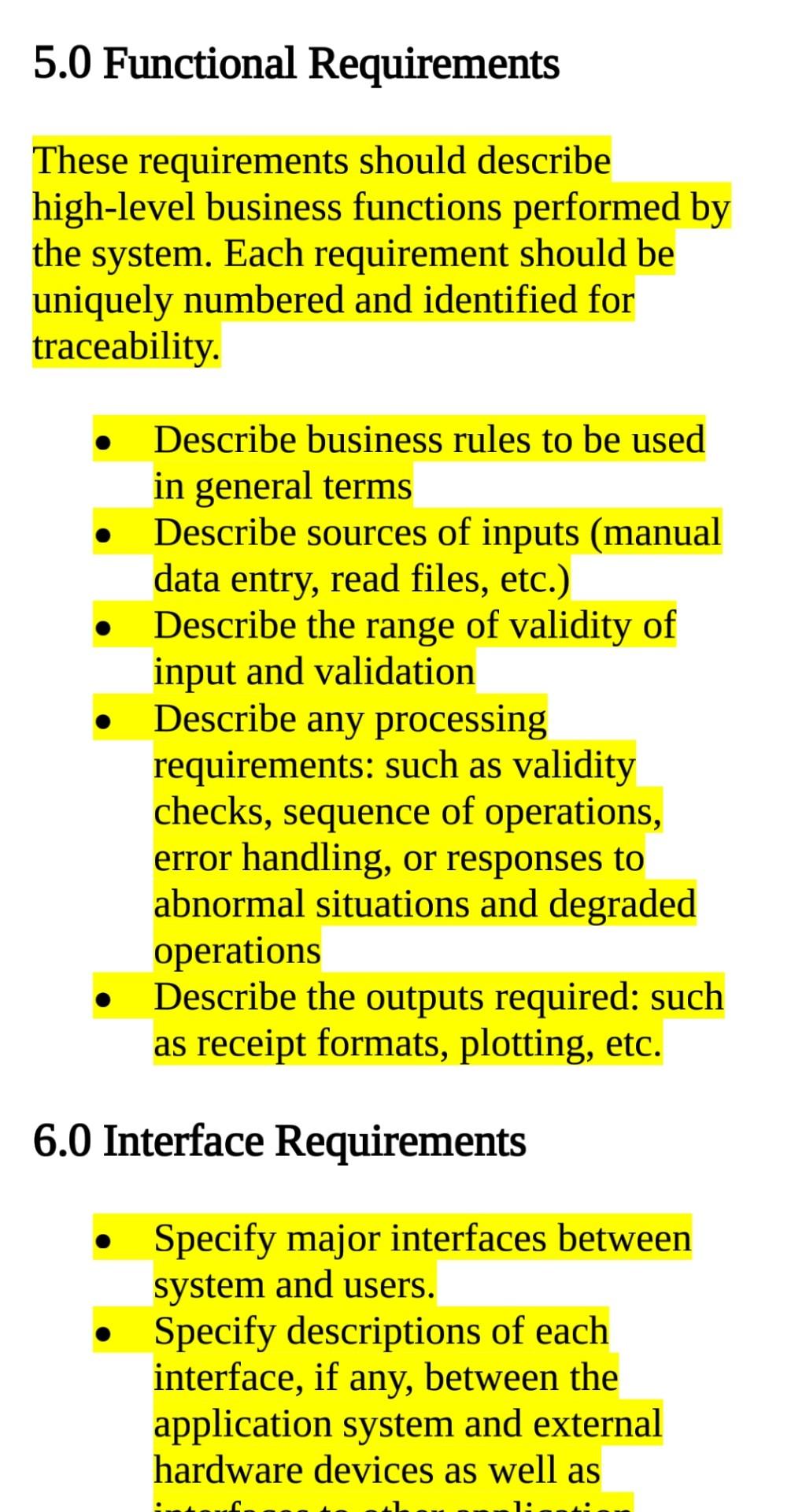
please anwer all assignment
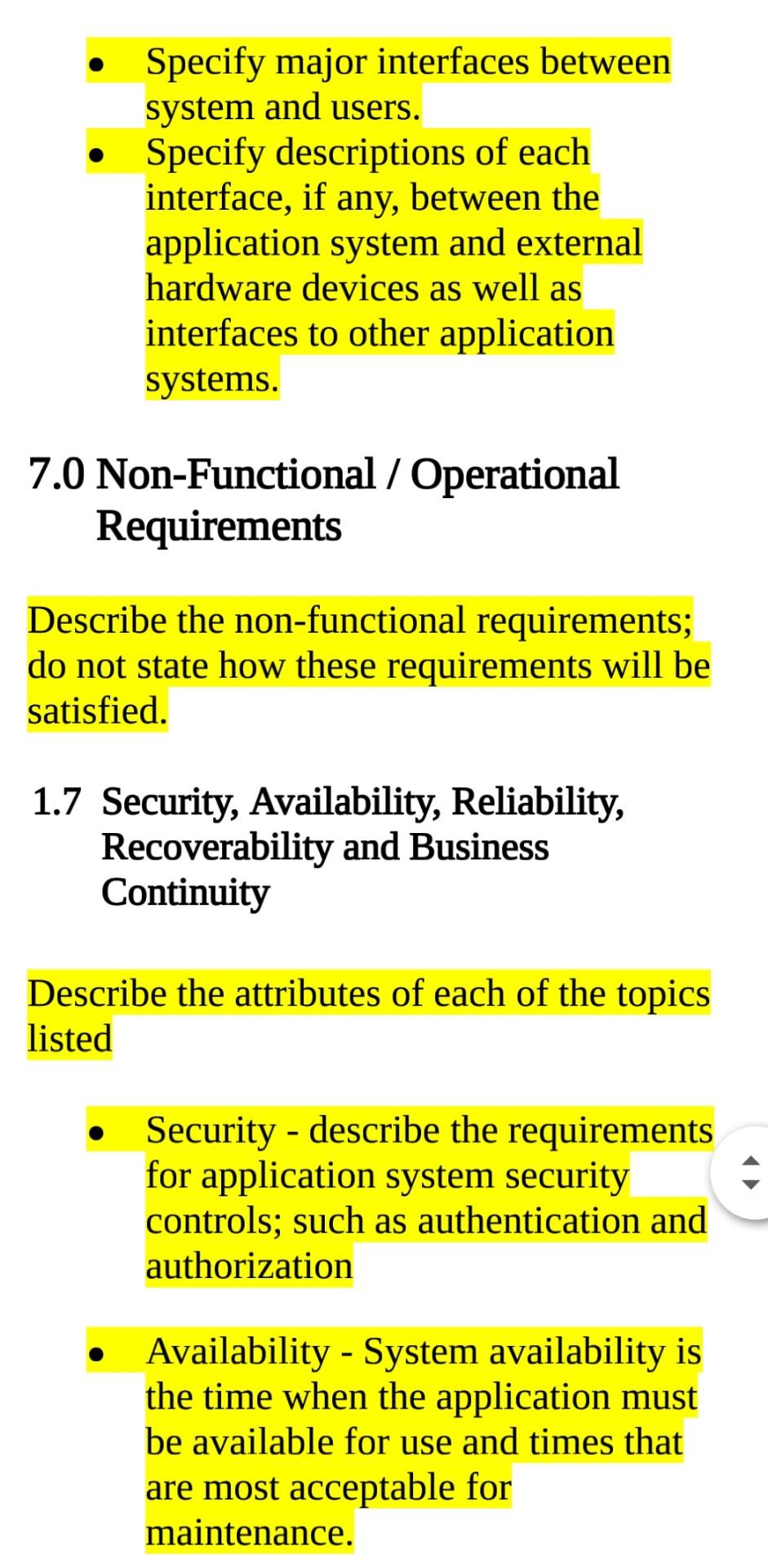
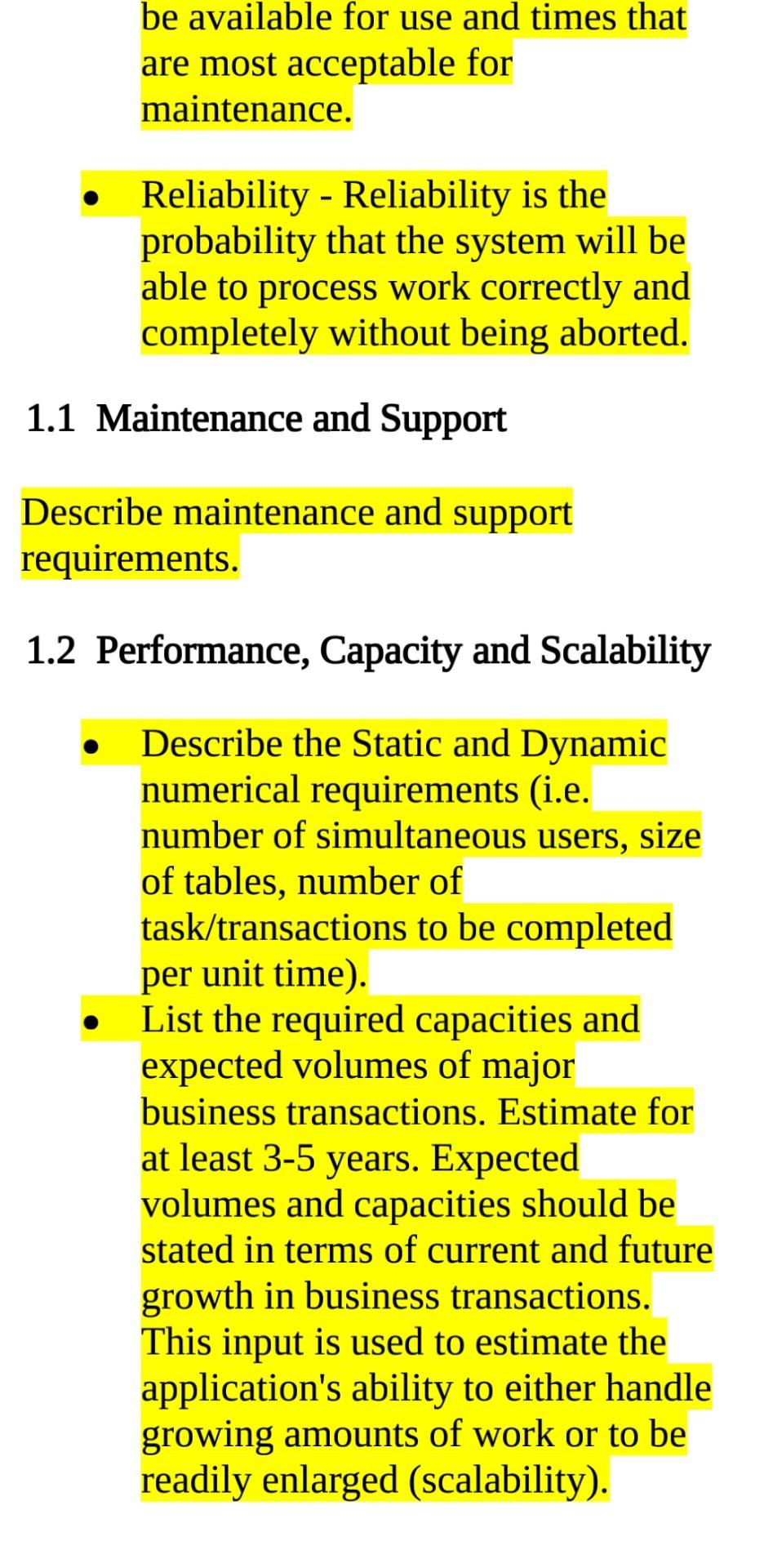
Product Description: - Describe the need for the system. - Briefly describe the system's functions. - Explain how it will work with other systems. - Describe how the system fits into the overall business. - Provide an overview of any definitions the reader should understand before reading on. - Who is the end-user? 2.0 Team Members List the names, titles, and roles of the project team members. - Performing Organizations and their Responsibilities: Describes the participating organizations, and who will do what throughout the project. - Technical Management and Control: Describes the management approach that will be used to guide the project and ensure that cost, delivery, and schedule are met. Includes a description of rules and regulations that the project team will follow, and procedures for tracking progress and managing variances to plan. Assumptions are statements about future situations, beyond the control of the project, whose outcome influence the success of a project. Identify basic assumptions upon which the specific software requirements depend such that if the assumptions change, the requirements also change. Assumptions include: - Availability of a hardware / software platform - Developments in technology - Availability of personnel - Availability of specific equipment 1.2 Constraints Constraints are conditions outside the control of the project that limit the design alternatives. Describe any high level items that limit the developer's options for designing the software such as: - Expected Budget - Preferred Software Programming Language(s) - Required Development Tools - Handling of Security Requirements (if any) - Potential Risks - Policy and Regulation - Milestones and Deliverables: Schedule with dates of major milestones and deliverables that result from completion of the project tasks. 4.0 General System Description 1.4System Context Specify whether the system is totally self-contained or is a component of a larger system package. Describe the functions of each hardware component and identify the respective interfaces 1.5 System Environments and Modes Describe the environments the proposed system requires; such as: internet, outage, debug, etc. 1.6 User Characteristics Describe those characteristics of the end users that have an effect on the specific requirements of the software. Some items to consider include: 5.0 Functional Requirements These requirements should describe high-level business functions performed by the system. Each requirement should be uniquely numbered and identified for traceability. - Describe business rules to be used in general terms - Describe sources of inputs (manual data entry, read files, etc.) - Describe the range of validity of input and validation - Describe any processing requirements: such as validity checks, sequence of operations, error handling, or responses to abnormal situations and degraded operations - Describe the outputs required: such as receipt formats, plotting, etc. 6.0 Interface Requirements - Specify major interfaces between system and users. - Specify descriptions of each interface, if any, between the application system and external hardware devices as well as - Specify major interfaces between system and users. - Specify descriptions of each interface, if any, between the application system and external hardware devices as well as interfaces to other application systems. 7.0 Non-Functional / Operational Requirements Describe the non-functional requirements; do not state how these requirements will be satisfied. 1.7 Security, Availability, Reliability, Recoverability and Business Continuity Describe the attributes of each of the topics listed - Security - describe the requirements for application system security controls; such as authentication and authorization - Availability - System availability is the time when the application must be available for use and times that are most acceptable for maintenance. be available for use and times that are most acceptable for maintenance. - Reliability - Reliability is the probability that the system will be able to process work correctly and completely without being aborted. 1.1 Maintenance and Support Describe maintenance and support requirements. 1.2 Performance, Capacity and Scalability - Describe the Static and Dynamic numerical requirements (i.e. number of simultaneous users, size of tables, number of task/transactions to be completed per unit time). - List the required capacities and expected volumes of major business transactions. Estimate for at least 3-5 years. Expected volumes and capacities should be stated in terms of current and future growth in business transactions. This input is used to estimate the application's ability to either handle growing amounts of work or to be readily enlarged (scalability). Product Description: - Describe the need for the system. - Briefly describe the system's functions. - Explain how it will work with other systems. - Describe how the system fits into the overall business. - Provide an overview of any definitions the reader should understand before reading on. - Who is the end-user? 2.0 Team Members List the names, titles, and roles of the project team members. - Performing Organizations and their Responsibilities: Describes the participating organizations, and who will do what throughout the project. - Technical Management and Control: Describes the management approach that will be used to guide the project and ensure that cost, delivery, and schedule are met. Includes a description of rules and regulations that the project team will follow, and procedures for tracking progress and managing variances to plan. Assumptions are statements about future situations, beyond the control of the project, whose outcome influence the success of a project. Identify basic assumptions upon which the specific software requirements depend such that if the assumptions change, the requirements also change. Assumptions include: - Availability of a hardware / software platform - Developments in technology - Availability of personnel - Availability of specific equipment 1.2 Constraints Constraints are conditions outside the control of the project that limit the design alternatives. Describe any high level items that limit the developer's options for designing the software such as: - Expected Budget - Preferred Software Programming Language(s) - Required Development Tools - Handling of Security Requirements (if any) - Potential Risks - Policy and Regulation - Milestones and Deliverables: Schedule with dates of major milestones and deliverables that result from completion of the project tasks. 4.0 General System Description 1.4System Context Specify whether the system is totally self-contained or is a component of a larger system package. Describe the functions of each hardware component and identify the respective interfaces 1.5 System Environments and Modes Describe the environments the proposed system requires; such as: internet, outage, debug, etc. 1.6 User Characteristics Describe those characteristics of the end users that have an effect on the specific requirements of the software. Some items to consider include: 5.0 Functional Requirements These requirements should describe high-level business functions performed by the system. Each requirement should be uniquely numbered and identified for traceability. - Describe business rules to be used in general terms - Describe sources of inputs (manual data entry, read files, etc.) - Describe the range of validity of input and validation - Describe any processing requirements: such as validity checks, sequence of operations, error handling, or responses to abnormal situations and degraded operations - Describe the outputs required: such as receipt formats, plotting, etc. 6.0 Interface Requirements - Specify major interfaces between system and users. - Specify descriptions of each interface, if any, between the application system and external hardware devices as well as - Specify major interfaces between system and users. - Specify descriptions of each interface, if any, between the application system and external hardware devices as well as interfaces to other application systems. 7.0 Non-Functional / Operational Requirements Describe the non-functional requirements; do not state how these requirements will be satisfied. 1.7 Security, Availability, Reliability, Recoverability and Business Continuity Describe the attributes of each of the topics listed - Security - describe the requirements for application system security controls; such as authentication and authorization - Availability - System availability is the time when the application must be available for use and times that are most acceptable for maintenance. be available for use and times that are most acceptable for maintenance. - Reliability - Reliability is the probability that the system will be able to process work correctly and completely without being aborted. 1.1 Maintenance and Support Describe maintenance and support requirements. 1.2 Performance, Capacity and Scalability - Describe the Static and Dynamic numerical requirements (i.e. number of simultaneous users, size of tables, number of task/transactions to be completed per unit time). - List the required capacities and expected volumes of major business transactions. Estimate for at least 3-5 years. Expected volumes and capacities should be stated in terms of current and future growth in business transactions. This input is used to estimate the application's ability to either handle growing amounts of work or to be readily enlarged (scalability)
Step by Step Solution
There are 3 Steps involved in it
Step: 1

Get Instant Access to Expert-Tailored Solutions
See step-by-step solutions with expert insights and AI powered tools for academic success
Step: 2

Step: 3

Ace Your Homework with AI
Get the answers you need in no time with our AI-driven, step-by-step assistance
Get Started


